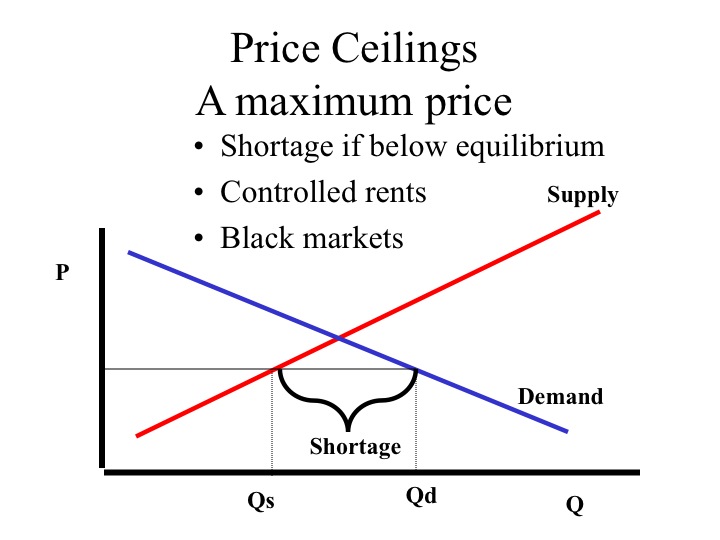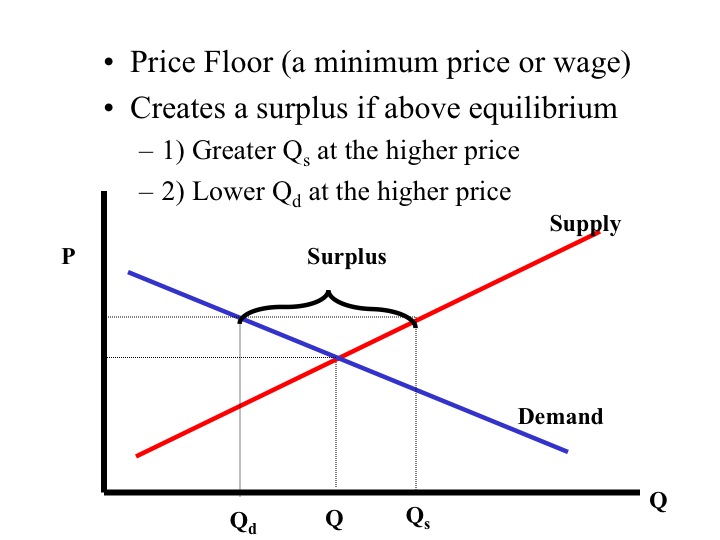Elasticity of Demand
Tells how drastically buyers will cut back or increase their demand for a good when the prices rises or falls.1. Elastic demand
When demand will change greatly given a small change in price.-We tend to think of wants.
Ex) if movie tickets increase to $25, we are lead to find alternate ways.
More than one
2. Inelastic demand
Your demand for a product will not change regardless of price.We tend to think of needs.
Ex) Milk, gasoline, medicine, salt
Less than 1
3. Unielastic demand
Equal to one1.New quantity-old quantity/ old quantity
2.New price-old price/ old price
3. PED
Equilibrium
The point at which the supply curve and demand curve intersect. The point that they insect at means that an economy is using their resources efficiently.Shortage- QD>QS
Surplus- QS>QD
Price ceiling
Government imposed limit on how high you can be charged or service.
Price floor
Government imposed minimum on how low a price can be charged for a service.Ex) $7.25 minimum wage

Total Revenue- Price x Quantity
Marginal Revenue
Additional income from selling an additional unit of a good.

Fixed cost
A cost that does not change no matter how much is produced.Ex) rent, mortgage
Variable cost
A cost that changes and fluctuates.Ex) water bill (how much you use)
Marginal cost- New total cost - old total cost
Spend the cost, revenue is what you bring in.Total cost- TFC+TVC=TC
Average total fixed cost- AFC + AVC
Average Fixed Cost- TFC/Quantity
Average Variable Cost- TVC/Quantity
Total Variable Cost- Quantity x AVC
I like how you color-coded each section, and that you included many examples in the form of pictures as an addition to the notes you provided. It may be a good idea to find a video on how to solve supply practice problems to accompany your data tables. :)
ReplyDeleteYour blog is very informative and precise on what the topic is about.
ReplyDelete